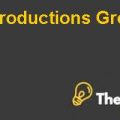
MARTINGALE ASSET MANAGEMENT Case Solution
1. Which issues should investors consider when deciding whether to invest in a 130/30 fund?
Despite of the efficient performance of 130/30 approach, the investor should typically focus on its associated risk. The two risks that the investor should focus before investing in it are the after effect of the use of short selling as well as financial leverage. This investment required huge cost associated with the collateral requirements and variable short rebates, moreover, the turnover can abolish even with the healthiest alphas. There is a strong risk of rising borrowing fees with the managers who might not have the short capacity issues like the larger counterparts.
In addition, the short selling if worked reversely like if the stock price raises then it could create the penalizing effect for the managers of the company, the managers would then required to amend its short position in order to make the portfolio balanced. There are also some tangible risk associated with this investment like the risk of being short-squeezed which can lead to increase in turnover at the most inappropriate timing. The other cost associated with it tends to be higher in case of beta-neutral portfolios.
In the case when the market goes against the position the directional bets could be very expensive in comparison of short position because the margin calls limit the manager’s ability to trade. The alpha is reduced with the investment friction that the higher turnover requires higher transaction cost. In summing all these issues, it is evident that a greater deal of portfolio monitoring as well as executive needs should be efficiently managed.
Moreover, the short position in concurrence with the long position requires extensive use of technology, skilled managers as well as integrated investment process to ensure the required rate of return from the balanced portfolio. All these issues should be considered by the investor before focusing to invest in the 130/30 mutual fund.
2. How do 130/30 funds work?
The 130/30 strategies is also called the enhanced equity, short extension, alpha extension as well as active extension etc. This is a type of fund which significantly helps the managers of a company in getting more return from their portfolio by enlarging the long position of the company with the modest amount of short selling. In considering the investment of $100, the managers of the company is required to take $30 in short positions whereas invest those proceeds generated into further long position.
Thus with this extension manager maintains a 100 percent market exposure and a beta of 1.0, while seeking enhanced levels of alpha. This alpha is generally supported by increased tracking error, but this does not have to be the case. The 130 portion of this strategy reflects the 130% of exposure in the long position whereas the 30 portion implies the 30% exposure to its short position.
The strategy can range from 120/20 to the maximum of about 150/50 but 130/30 is most recommended strategy because of its effectiveness and its existence in the hedge funds industry.
3. Is Martingale well suited to manage 130/30 funds successfully?
The successfully implementation of 130/30 funds requires the extensive study of the alpha of the short and long extensions as well as the correlations between the two positions. In the case of Martingale it can be seen that the management is the first mover to take the advantage as well as it has more experience in short selling. From its history, it can be seen that the company has invested in market neutral long-short funds. However the suitability of these funds can be analyzed by studying the company’s belief in investment...................
This is just a sample partial case solution. Please place the order on the website to order your own originally done case solution.










